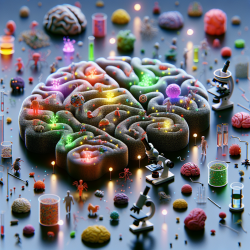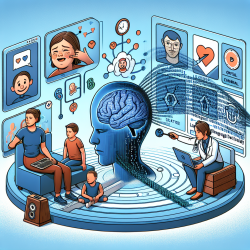Unlocking the Mysteries of Neurological Disorders with Tiny Models
In the ever-evolving field of neurological disorder research, the advent of cell-based and organoid models has opened up unprecedented avenues for understanding and potentially treating complex conditions such as autism spectrum disorder (ASD), Parkinson’s disease (PD), Alzheimer’s disease (AD), and amyotrophic lateral sclerosis (ALS). These tiny models are not just a breakthrough in research; they are a gateway to personalized medicine and novel therapeutic approaches.
Why Cell-Based Models Matter
Cell-based models have become an indispensable tool in deciphering the molecular mechanisms underlying neurological disorders. By creating models that closely mimic the human brain's physiology, researchers can observe disease progression and response to treatments in real-time. This is particularly crucial for conditions like ASD and AD, where obtaining live biopsies from patients is neither ethical nor feasible.
The Leap to 3D and Organoid Models
While traditional 2D cell cultures have provided valuable insights, they fall short in replicating the complex environment of the human brain. Enter 3D and organoid models. These advanced models allow researchers to study the brain's architecture and function in a more realistic setting. For instance, organoids can mimic the brain's development stages, providing a deeper understanding of disorders like ASD, which are rooted in neurodevelopmental deficits.
Applications in Neurological Disorders
- Autism Spectrum Disorder (ASD): Organoid models help in understanding the genetic and environmental factors contributing to ASD. They offer a platform to test potential treatments targeting specific genetic mutations associated with the disorder.
- Parkinson’s Disease (PD): 3D models of the midbrain have been developed to study the death of dopaminergic neurons, a hallmark of PD. These models are crucial for testing new drugs and understanding the disease's progression.
- Alzheimer’s Disease (AD): Organoids have been used to replicate the amyloid plaques and tau tangles characteristic of AD. This allows for the screening of drugs that could potentially inhibit these pathological features.
- Amyotrophic Lateral Sclerosis (ALS): Organoid models provide insights into the degeneration of motor neurons, offering a platform to test regenerative therapies.
The Future of Neurological Research
The integration of cell-based and organoid models in neurological research is not just a trend; it is the future. As these models continue to evolve, they hold the promise of unraveling the complex pathophysiology of neurological disorders, leading to more effective and personalized treatments.
For practitioners and researchers, staying abreast of these advancements is crucial. Whether you are involved in direct patient care or research, understanding and utilizing these models can significantly enhance your ability to contribute to the field.
To delve deeper into the groundbreaking research on cell-based and organoid models, read the original research paper: Unraveling pathological mechanisms in neurological disorders: the impact of cell-based and organoid models.










